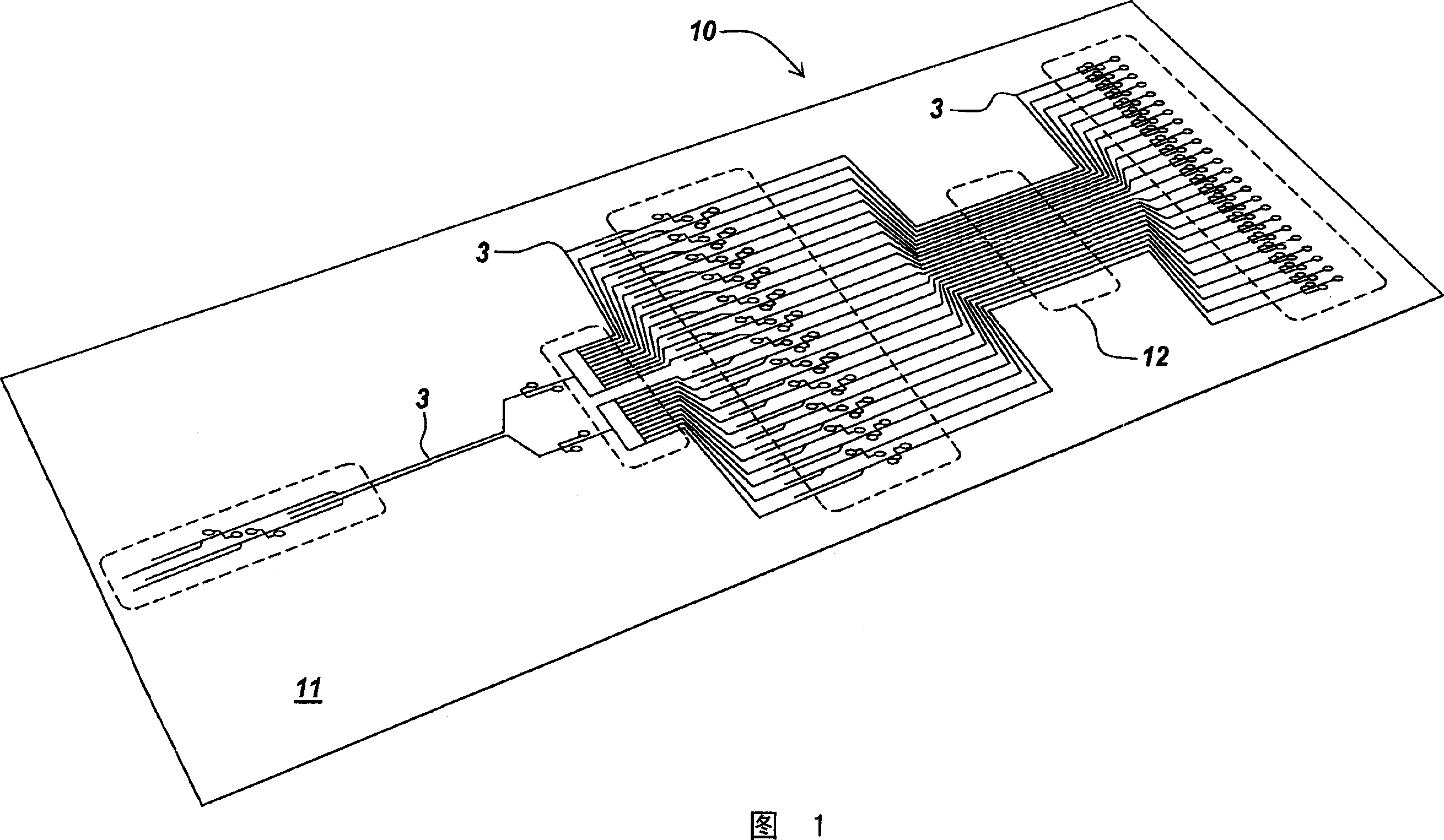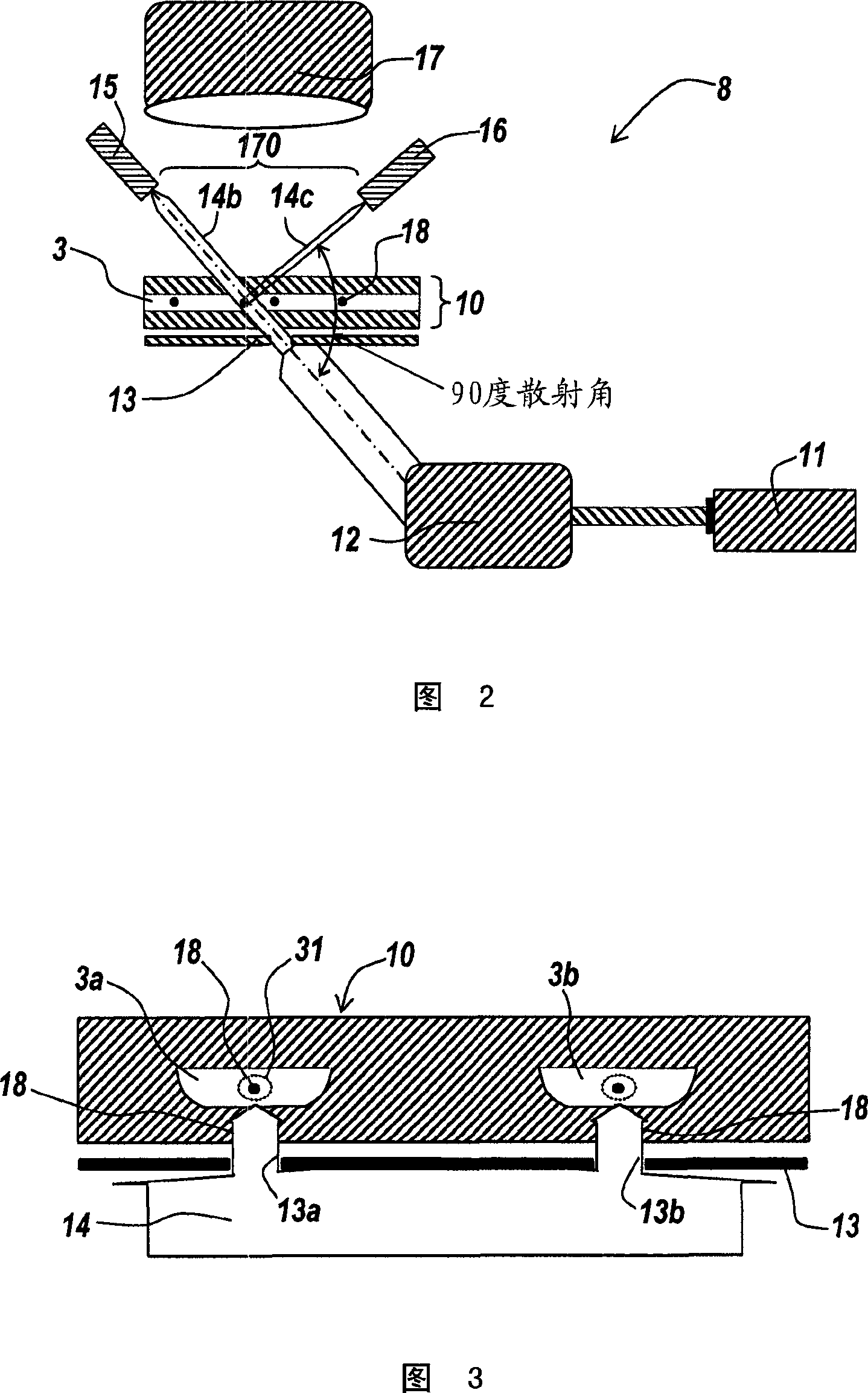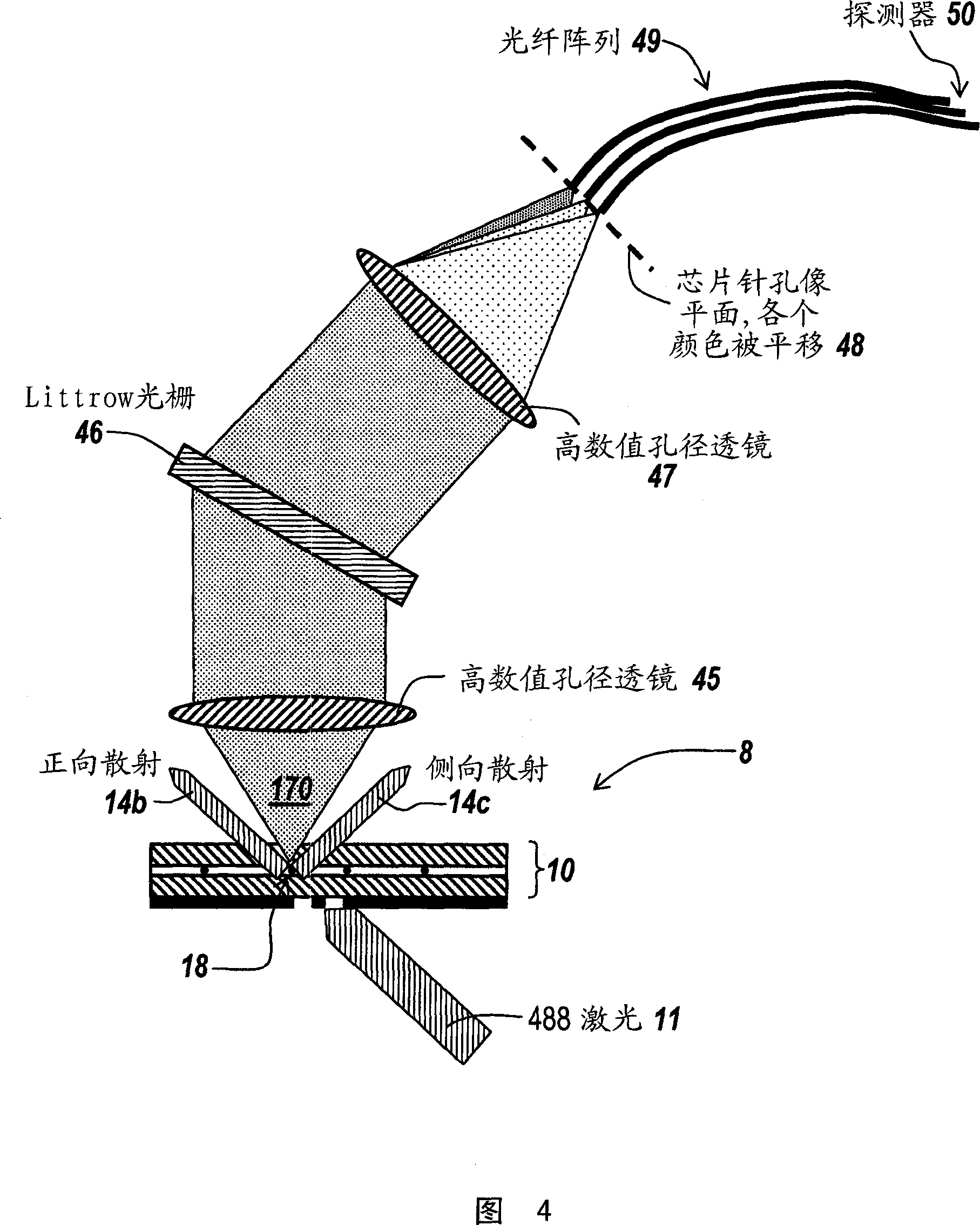Optical detector for a particle sorting system
An optical detection and detector technology, applied in the field of particle systems, can solve problems such as difficulty in observing low-brightness level signals, inaccurate optical detection systems, and poor results
- Summary
- Abstract
- Description
- Claims
- Application Information
AI Technical Summary
Problems solved by technology
Method used
Image
Examples
Embodiment Construction
[0023] The present invention provides an optical system for monitoring and detecting particle flow through an array of channels. The invention will be described below with reference to various exemplary embodiments. Those skilled in the art will appreciate that the present invention is applicable to many different uses and embodiments, and that the present invention is not particularly limited in application to the specific embodiments described herein.
[0024] FIG. 1 illustrates a microfluidic system 10 suitable for practicing an example embodiment of the present invention, the microfluidic system including a plurality of channels for conveying substances such as particles or cells therethrough. The example microfluidic system 10 comprises a substrate 1 having a plurality of channels, such as microchannels 3, disposed therein. These channels transport fluids and / or particles through the microfluidic system 10 for processing, manipulating and / or performing any suitable manip...
PUM
 Login to View More
Login to View More Abstract
Description
Claims
Application Information
 Login to View More
Login to View More - R&D
- Intellectual Property
- Life Sciences
- Materials
- Tech Scout
- Unparalleled Data Quality
- Higher Quality Content
- 60% Fewer Hallucinations
Browse by: Latest US Patents, China's latest patents, Technical Efficacy Thesaurus, Application Domain, Technology Topic, Popular Technical Reports.
© 2025 PatSnap. All rights reserved.Legal|Privacy policy|Modern Slavery Act Transparency Statement|Sitemap|About US| Contact US: help@patsnap.com



